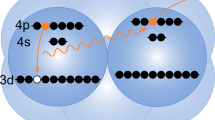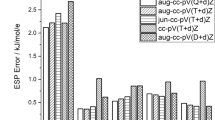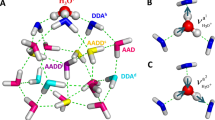Abstract
CALCULATIONS using Frost's “Floating Spherical Gaussian Type Orbital” method (FSGTO)1 suggested that the ions LiH+2, Li(H2)+2 and Li(H3)+3 should be stable2. Calculations on Li(H2)+n (where n has the value four, five or six) have recently been carried out using the same method. The dissociation energies obtained for Li(H2)+n→Li(H2)+n−1 and H2 are summarized in Table 1. At the same time, the ions were observed by Clampitt and Jefferies3, who also found the Na+, K+ and Rb+ analogues. Thus a very simple theoretical model has acted as a useful guide in indicating the existence of molecule ions that have now been observed experimentally.
This is a preview of subscription content, access via your institution
Access options
Subscribe to this journal
Receive 51 print issues and online access
$199.00 per year
only $3.90 per issue
Buy this article
- Purchase on Springer Link
- Instant access to full article PDF
Prices may be subject to local taxes which are calculated during checkout
Similar content being viewed by others
References
Frost, A. A., J. Chem. Phys., 47, 3707 (1967).
Easterfield, J., and Linnett, J. W., Chem. Commun., 64 (1970).
Clampitt, R., and Jefferies, D. K., Nature, 226, 141 (1970) (preceding article).
Author information
Authors and Affiliations
Rights and permissions
About this article
Cite this article
EASTERFIELD, J., LINNETT, J. Theoretical Calculations on the Ion Clusters Li(H2)+n and BeH(H2)+n. Nature 226, 142–143 (1970). https://doi.org/10.1038/226142a0
Received:
Issue Date:
DOI: https://doi.org/10.1038/226142a0
This article is cited by
-
Experimental Confirmation of the Ion Cluster BeH(H2)+
Nature Physical Science (1972)
Comments
By submitting a comment you agree to abide by our Terms and Community Guidelines. If you find something abusive or that does not comply with our terms or guidelines please flag it as inappropriate.



